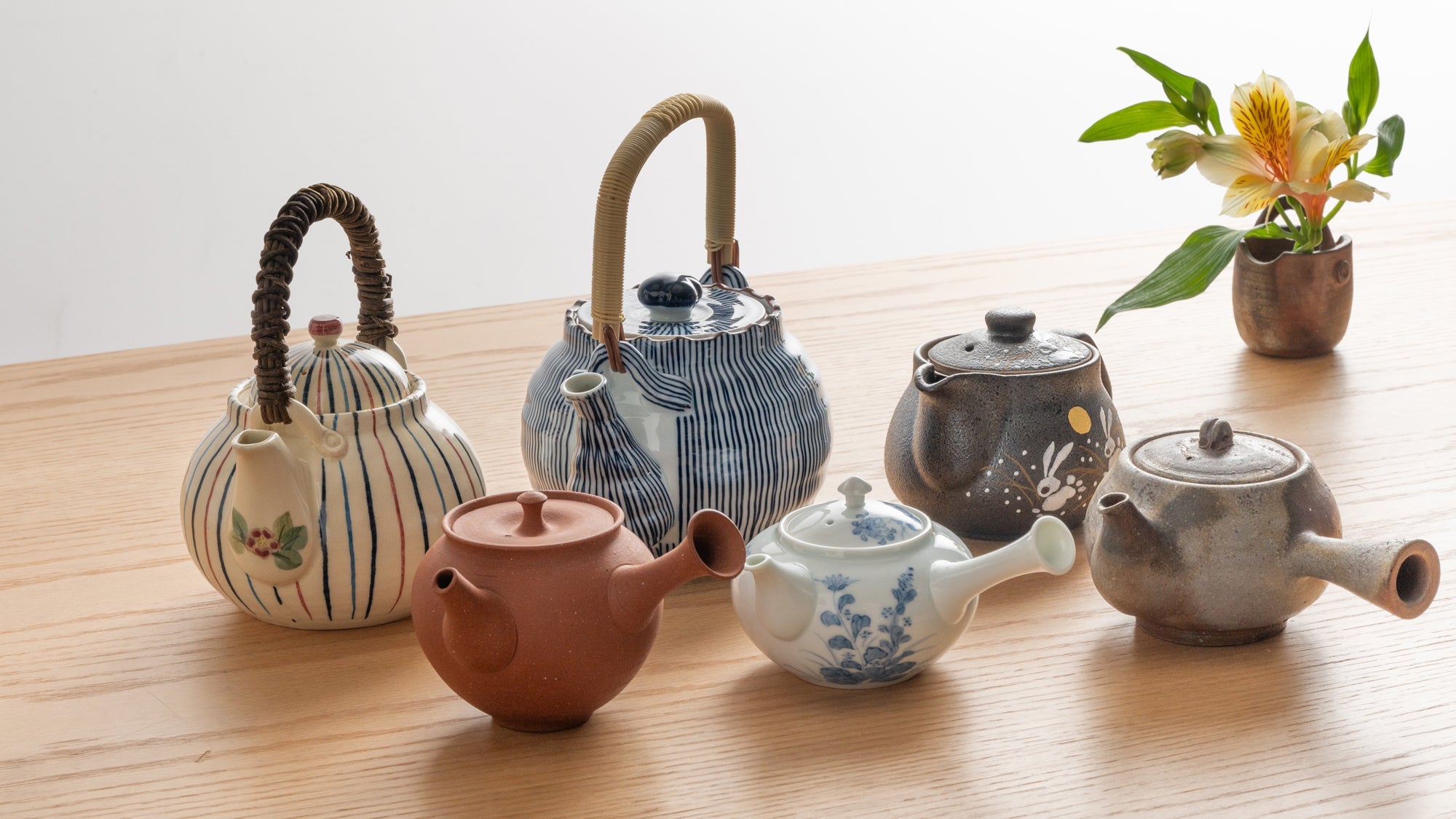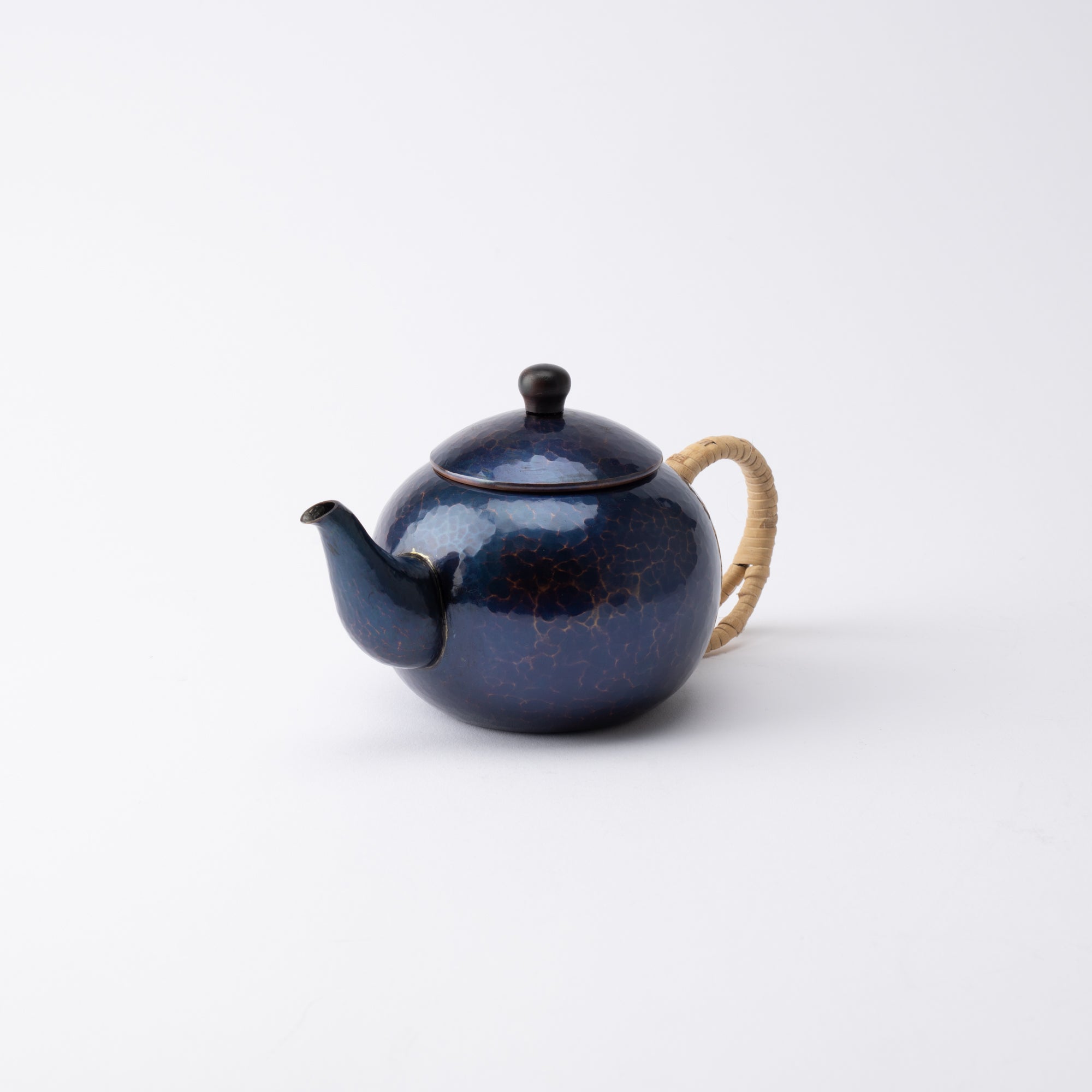
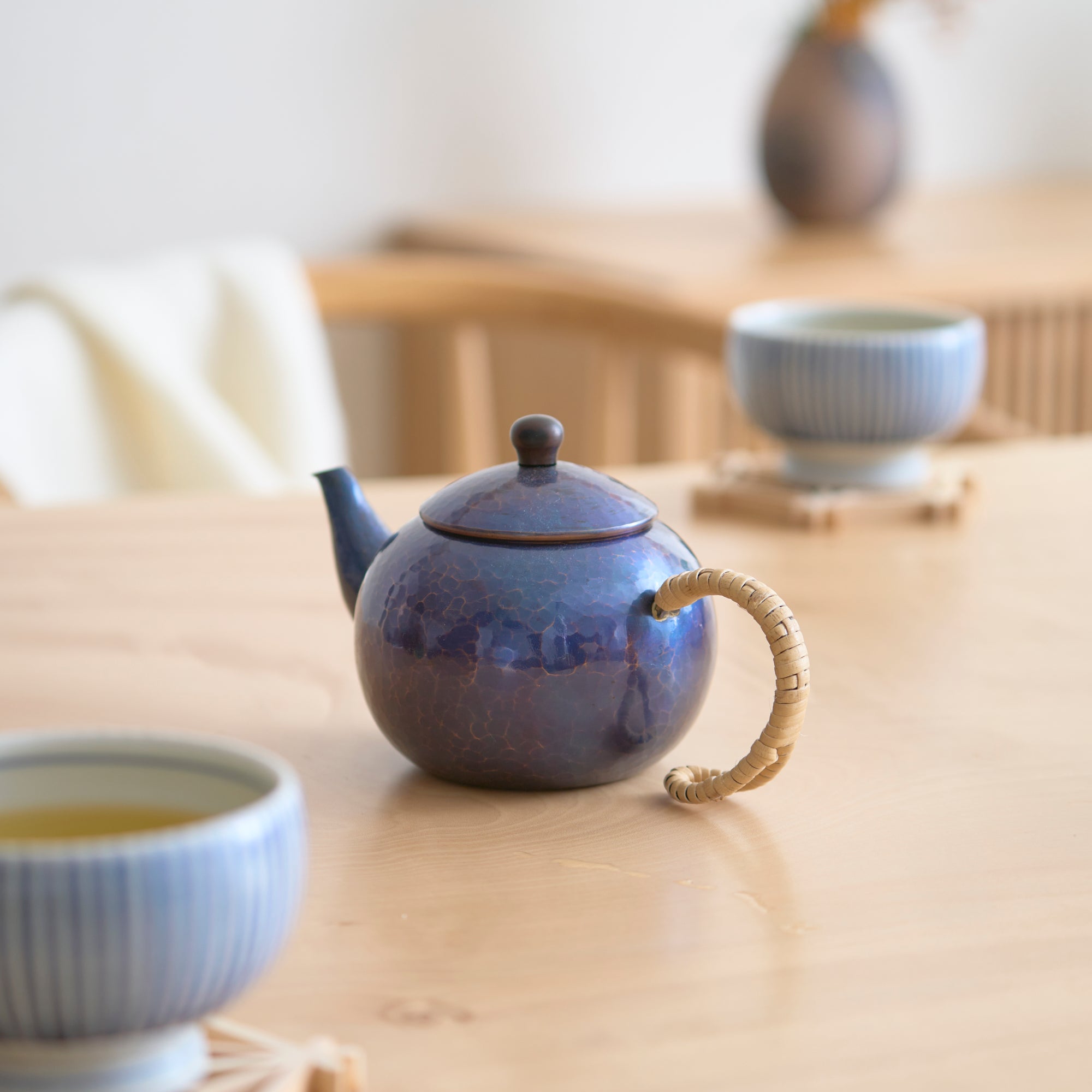
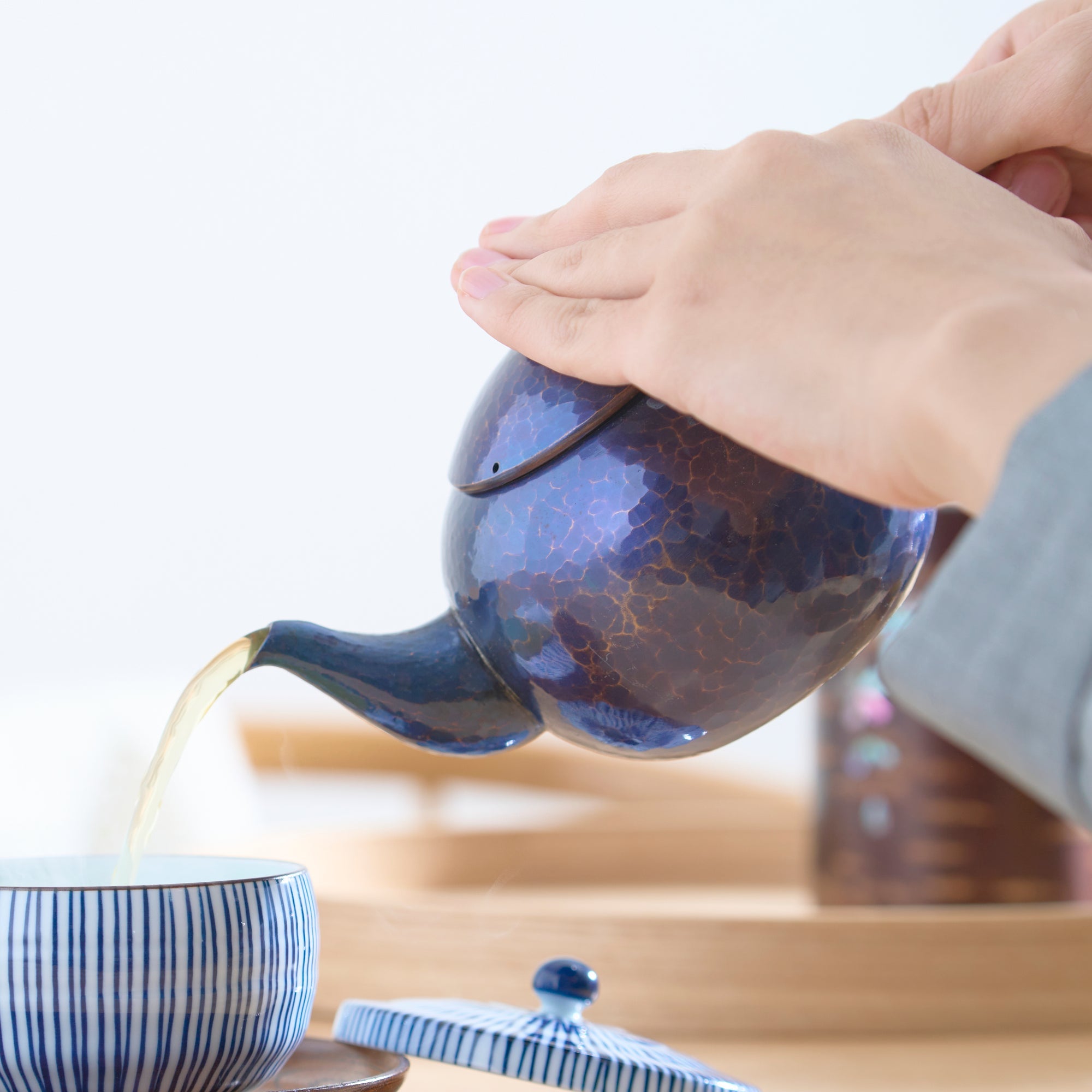
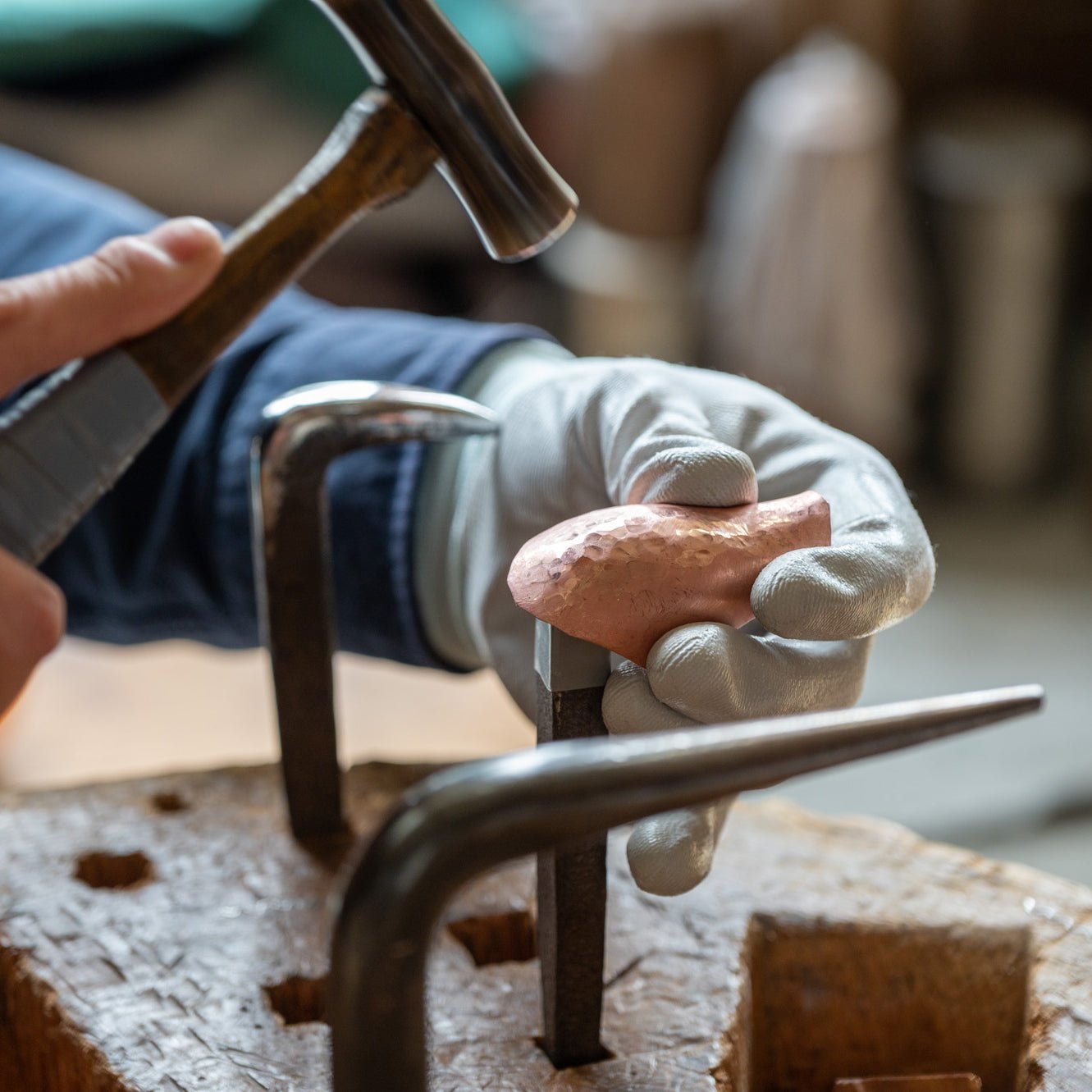

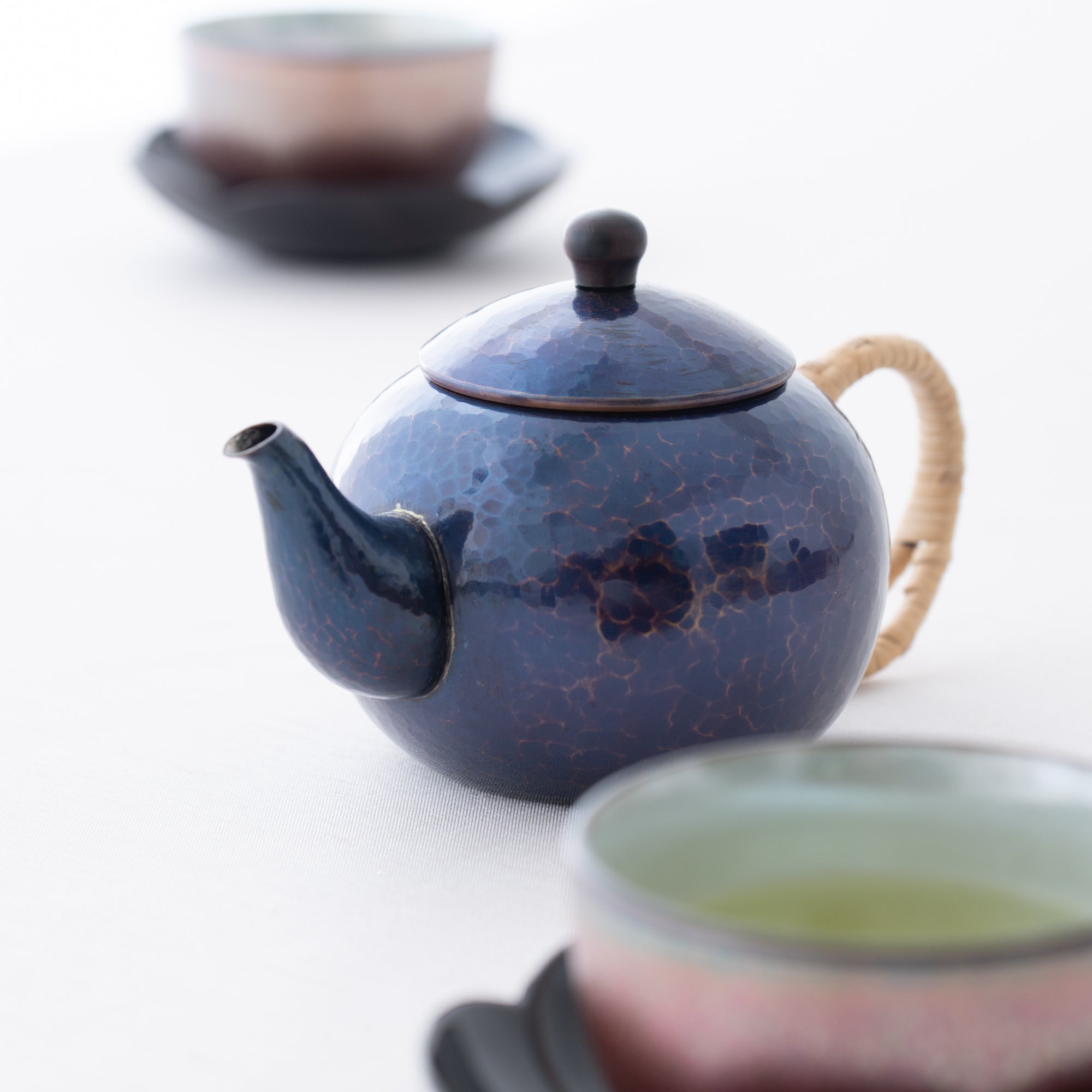
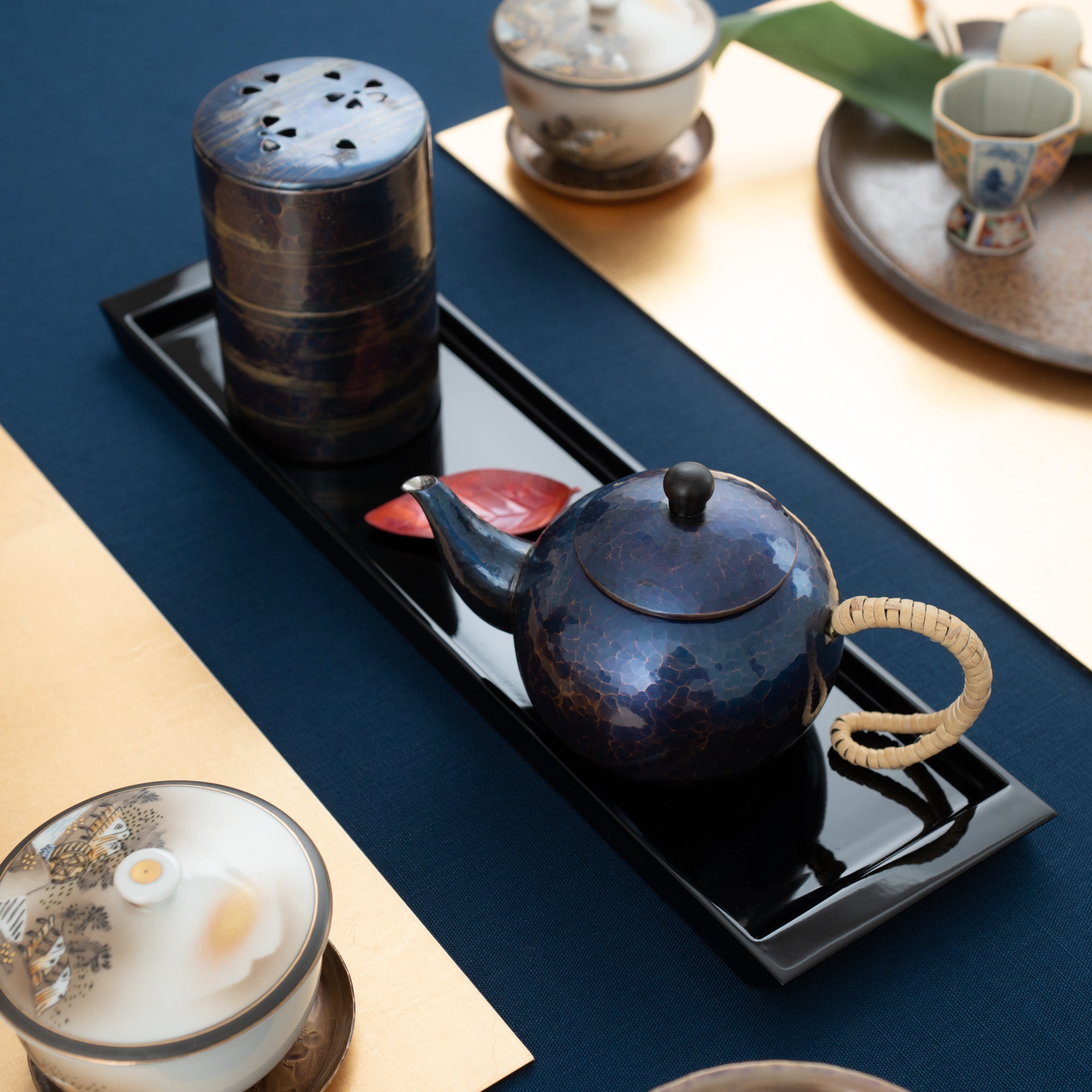


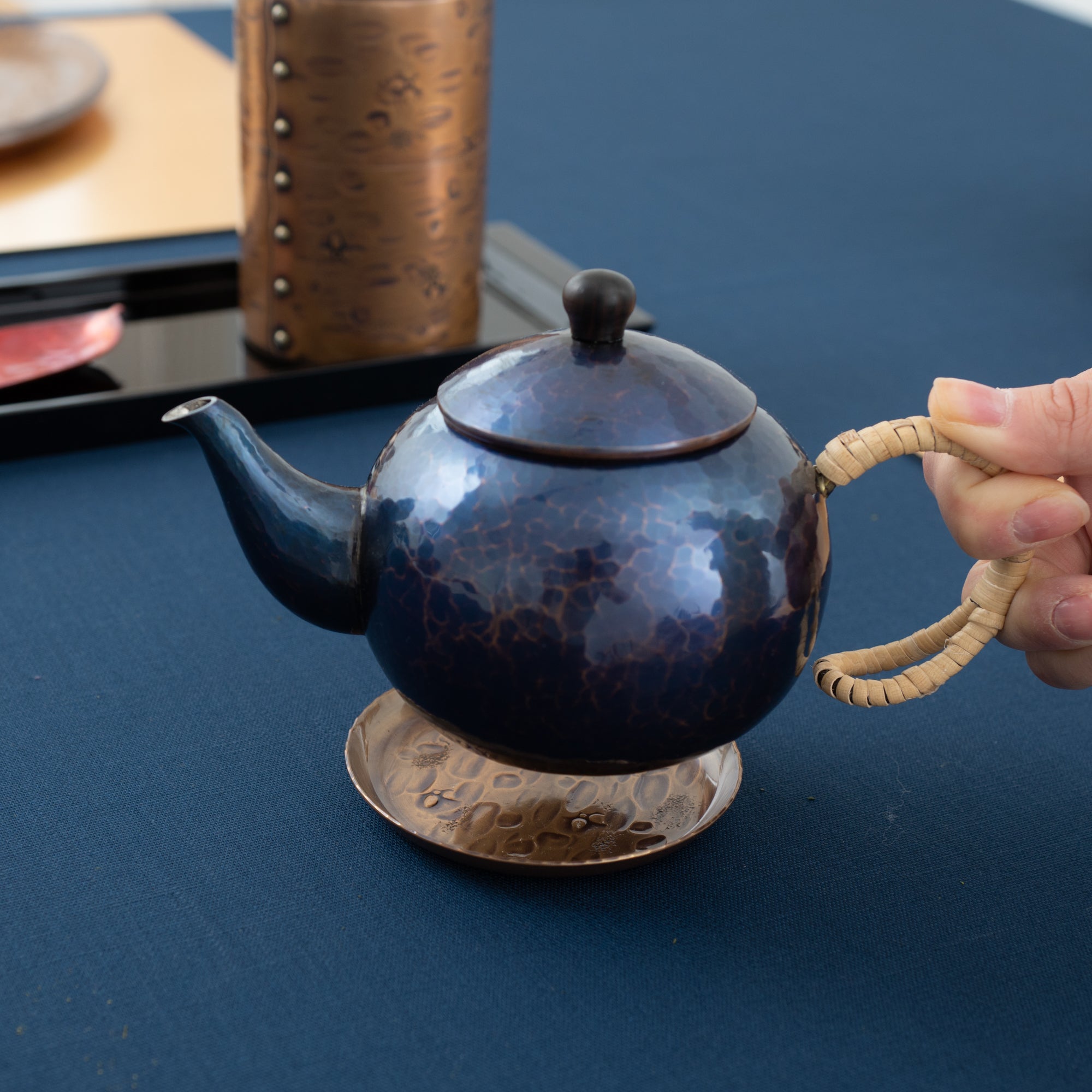
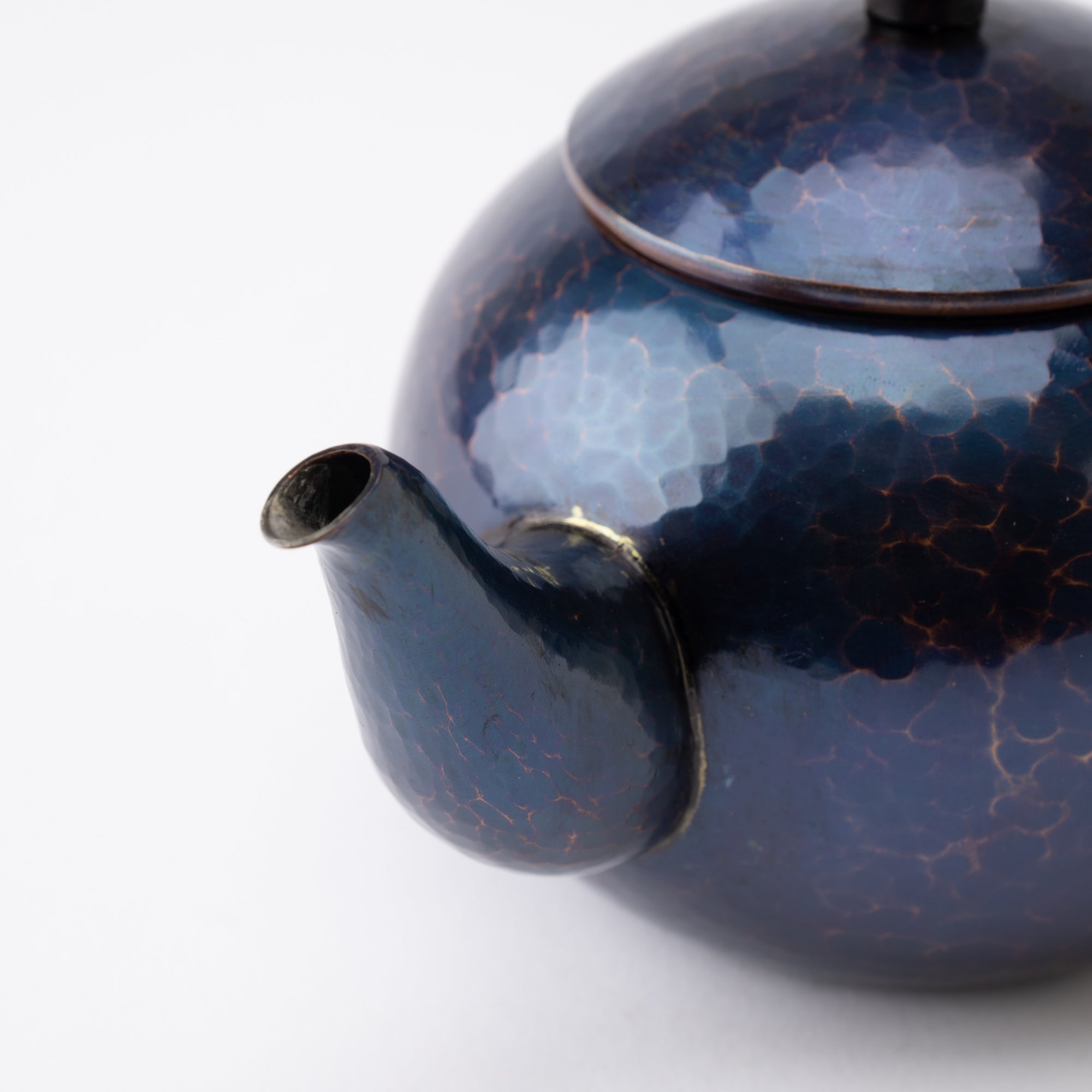
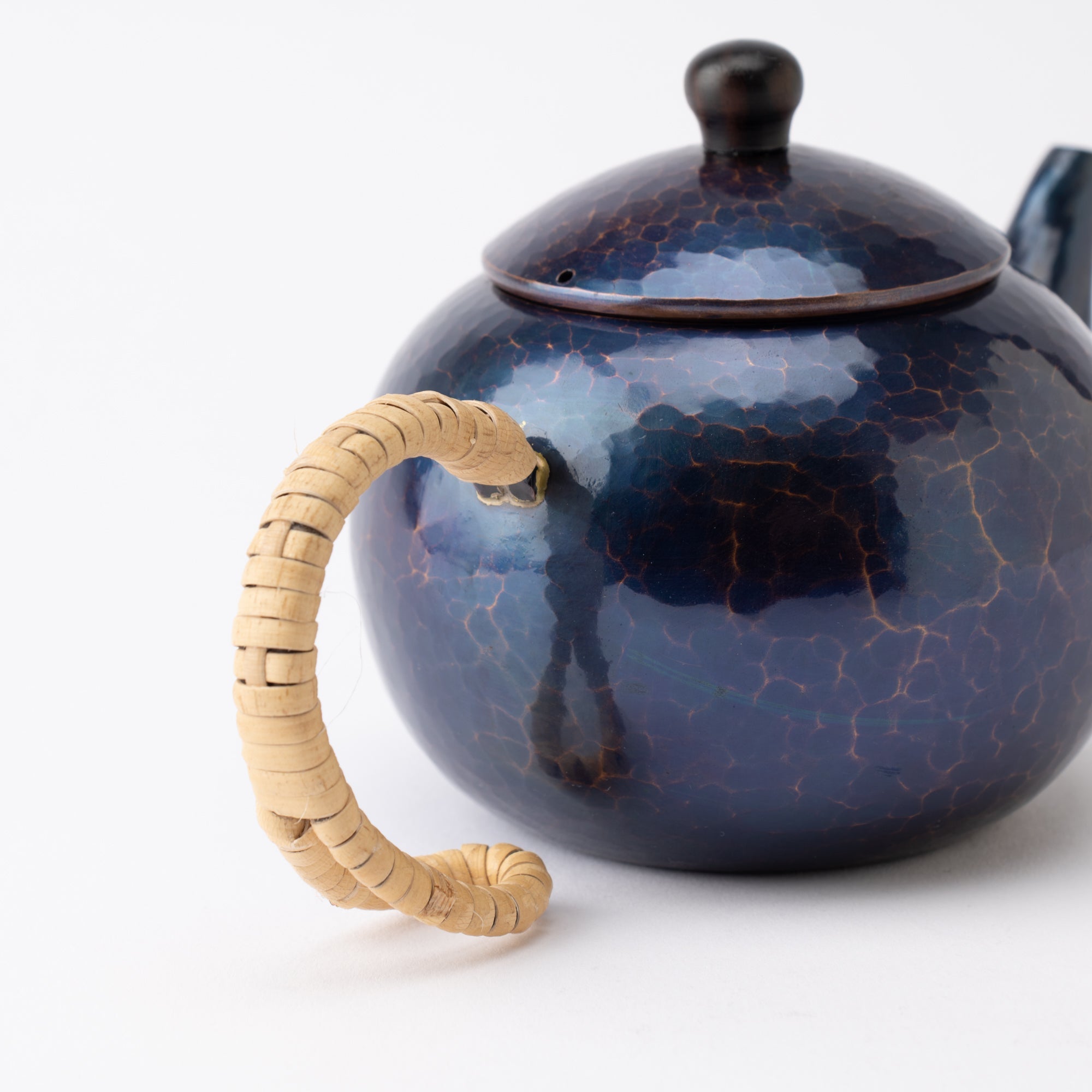
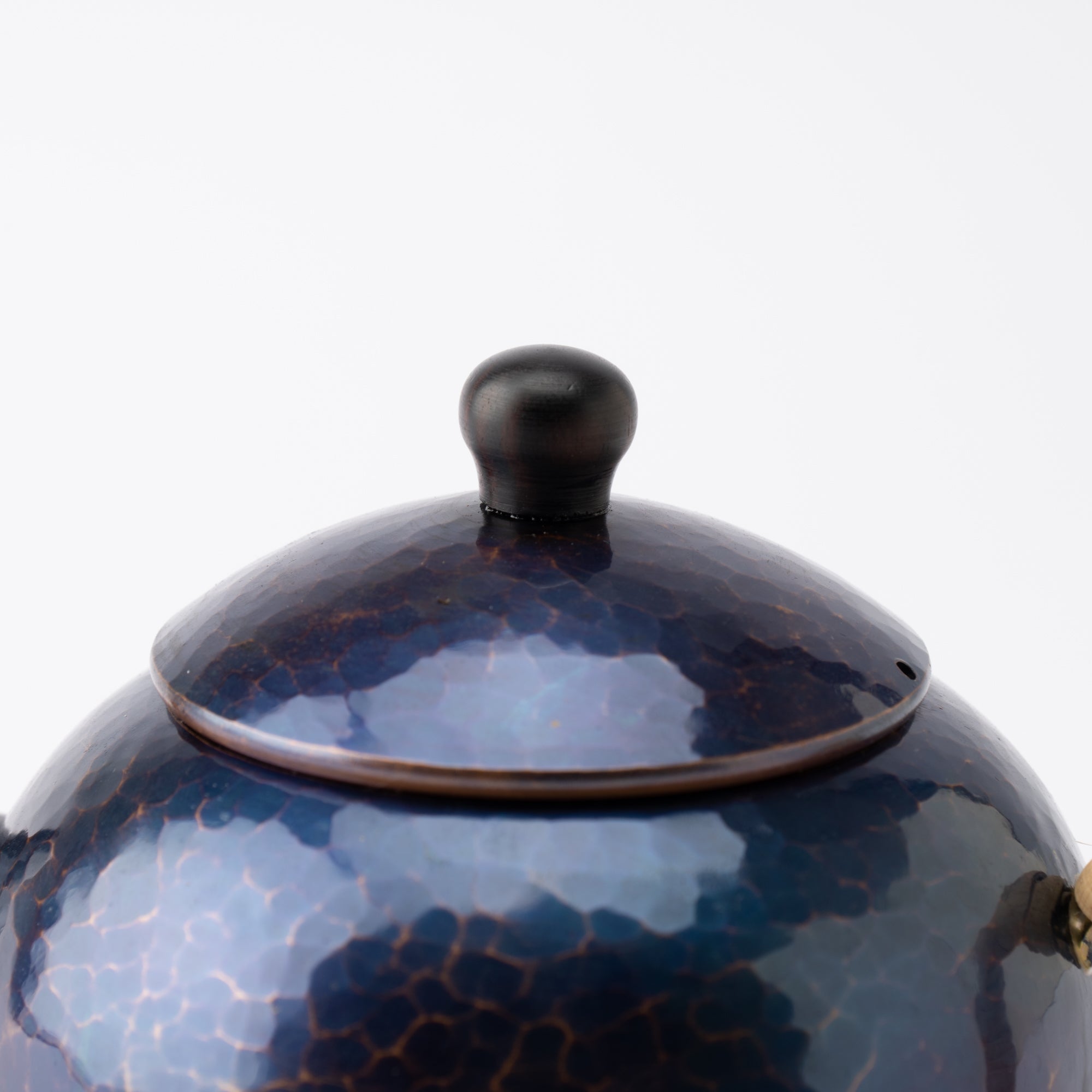
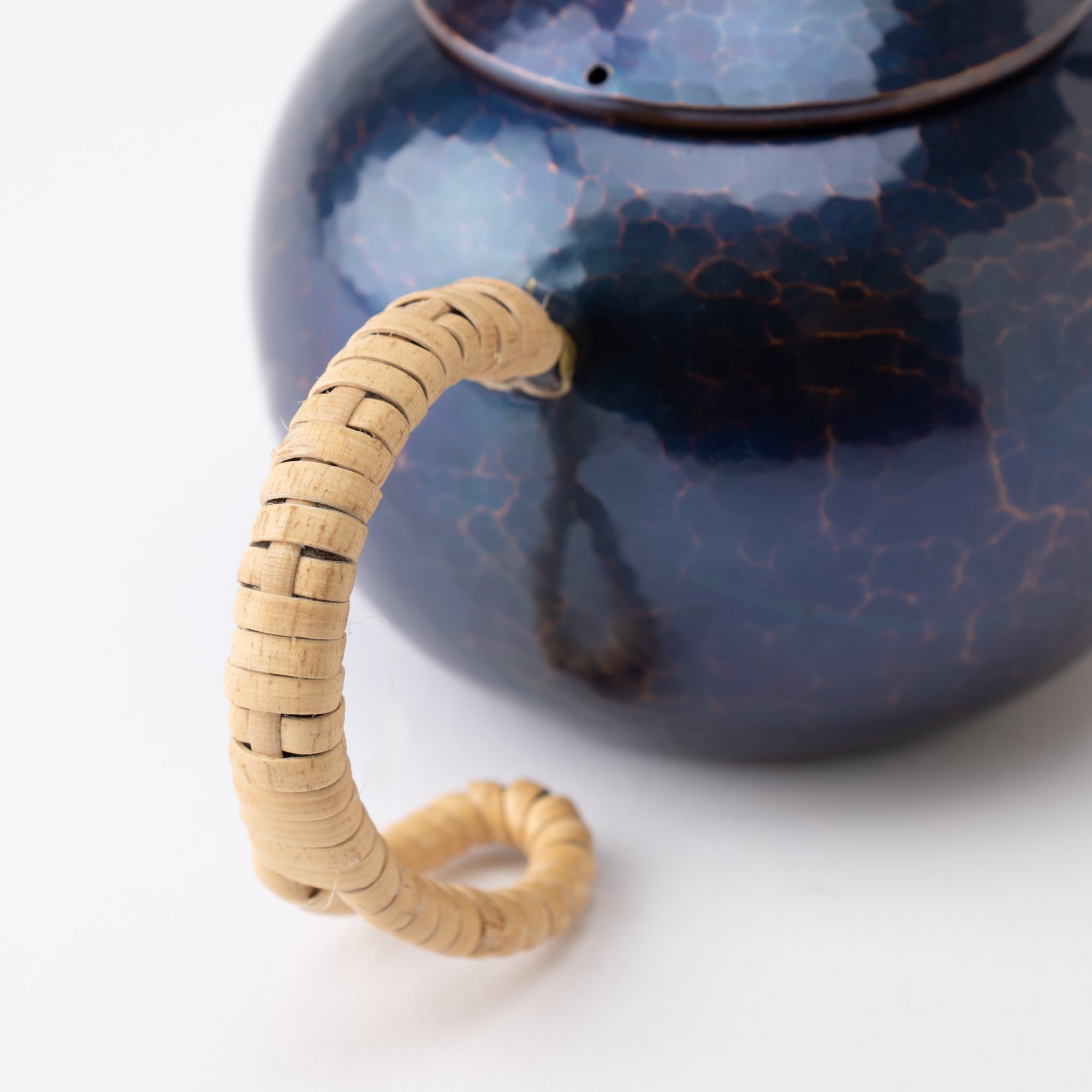
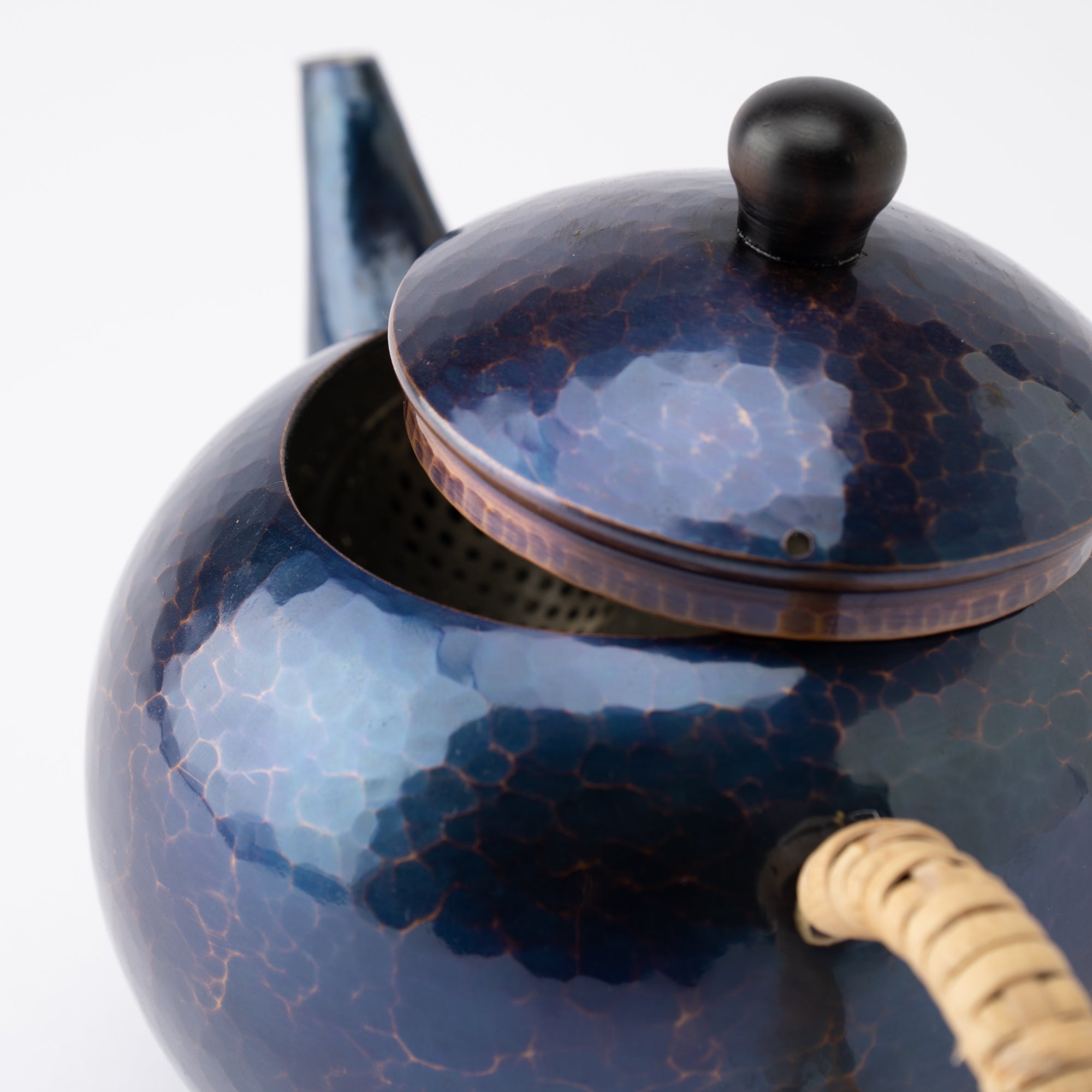
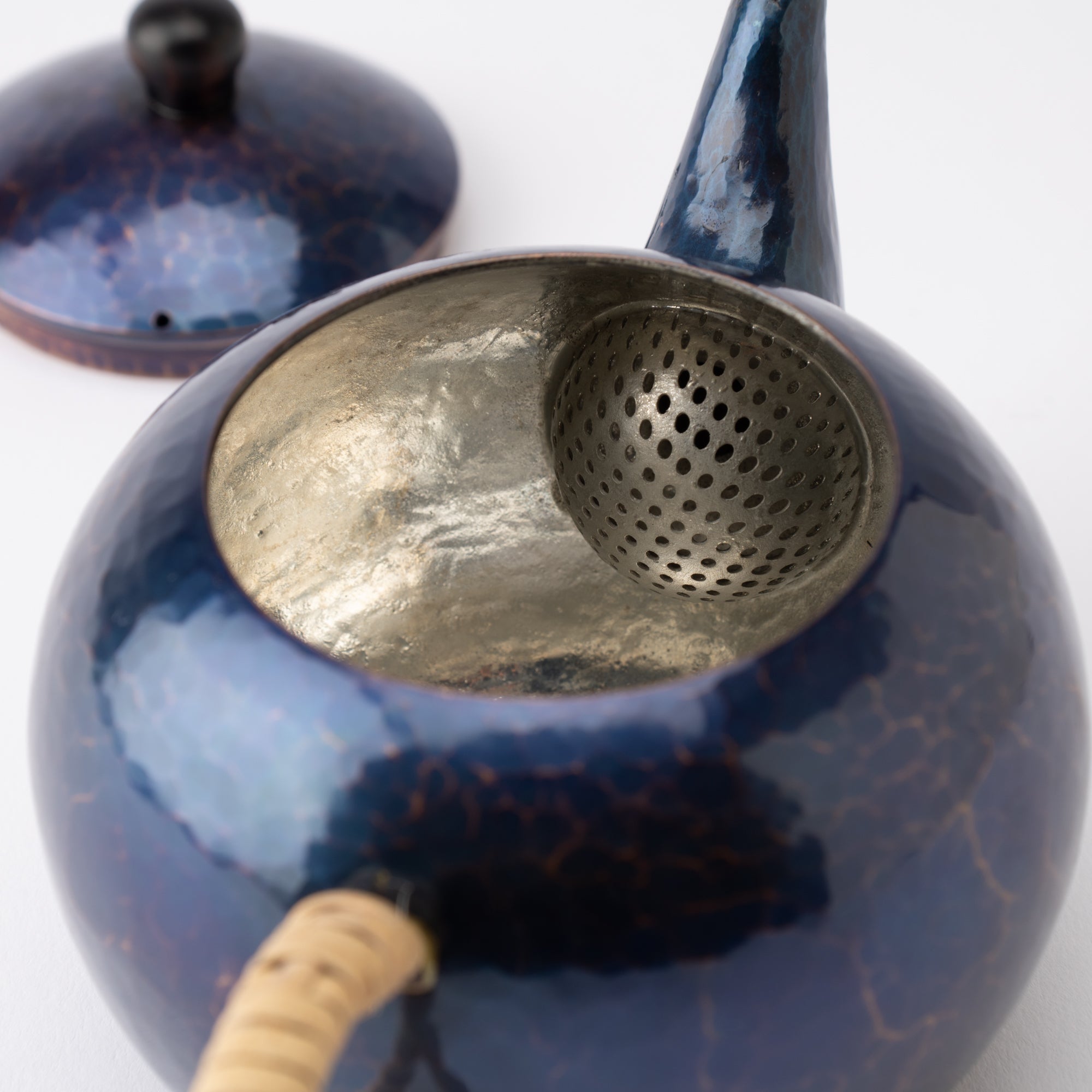

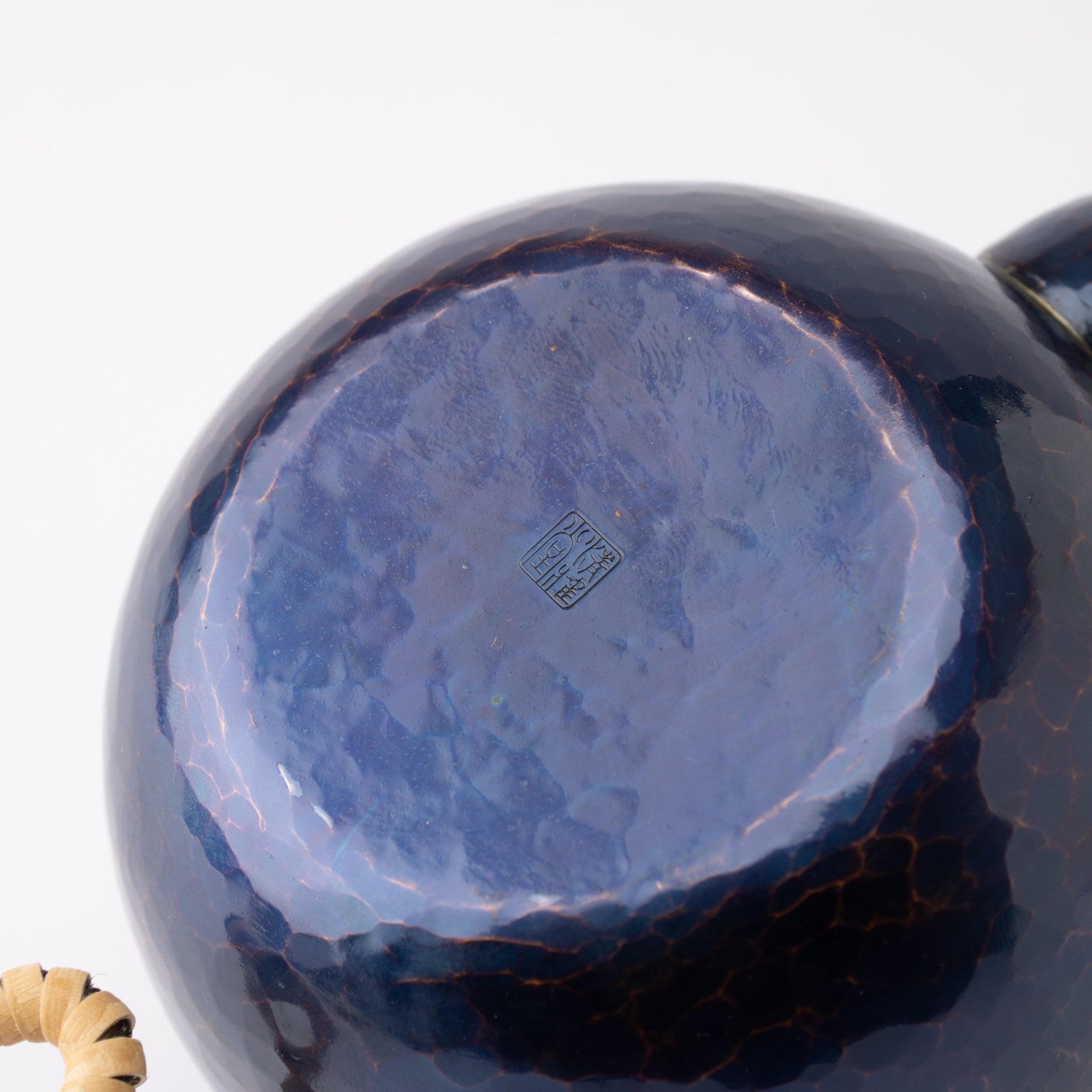
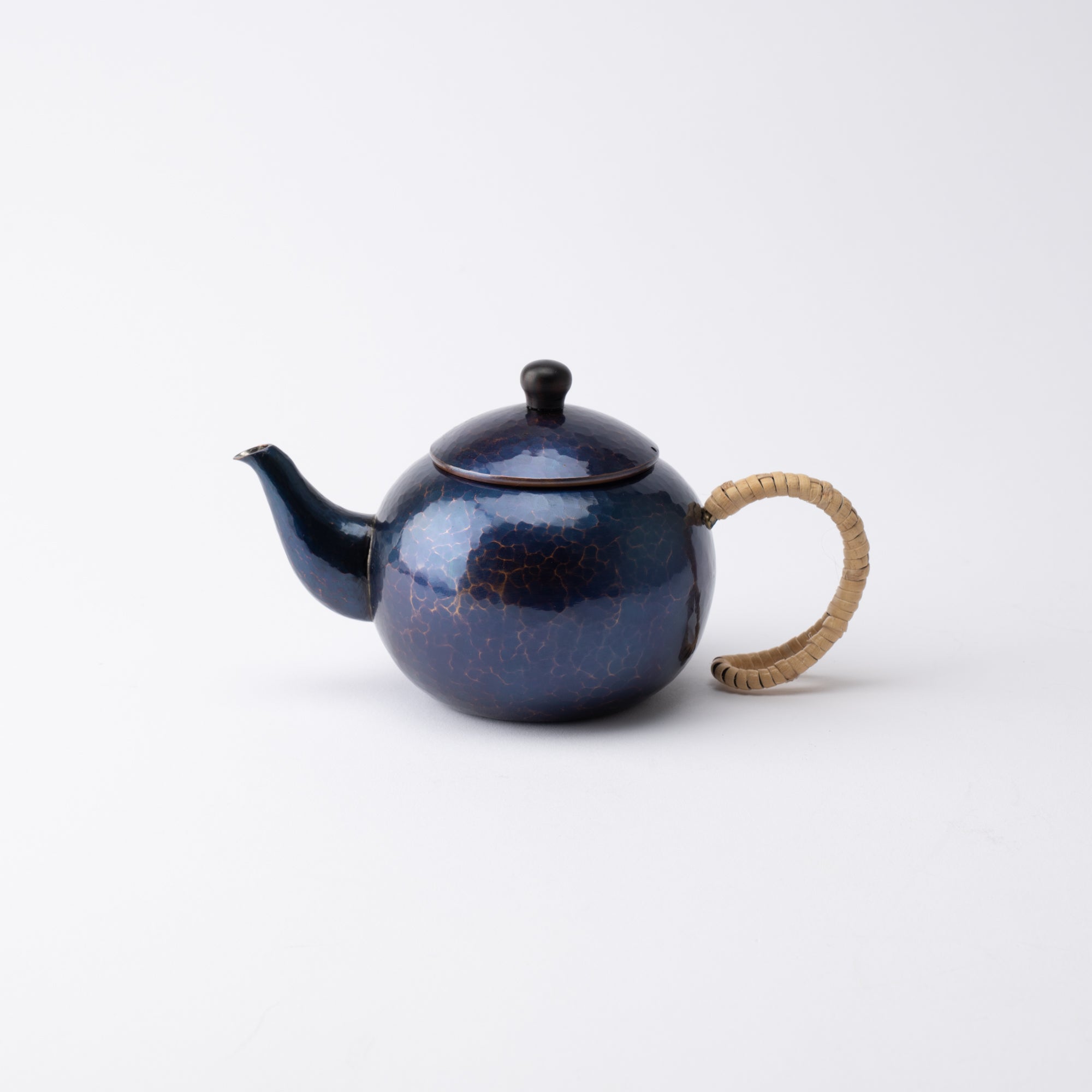
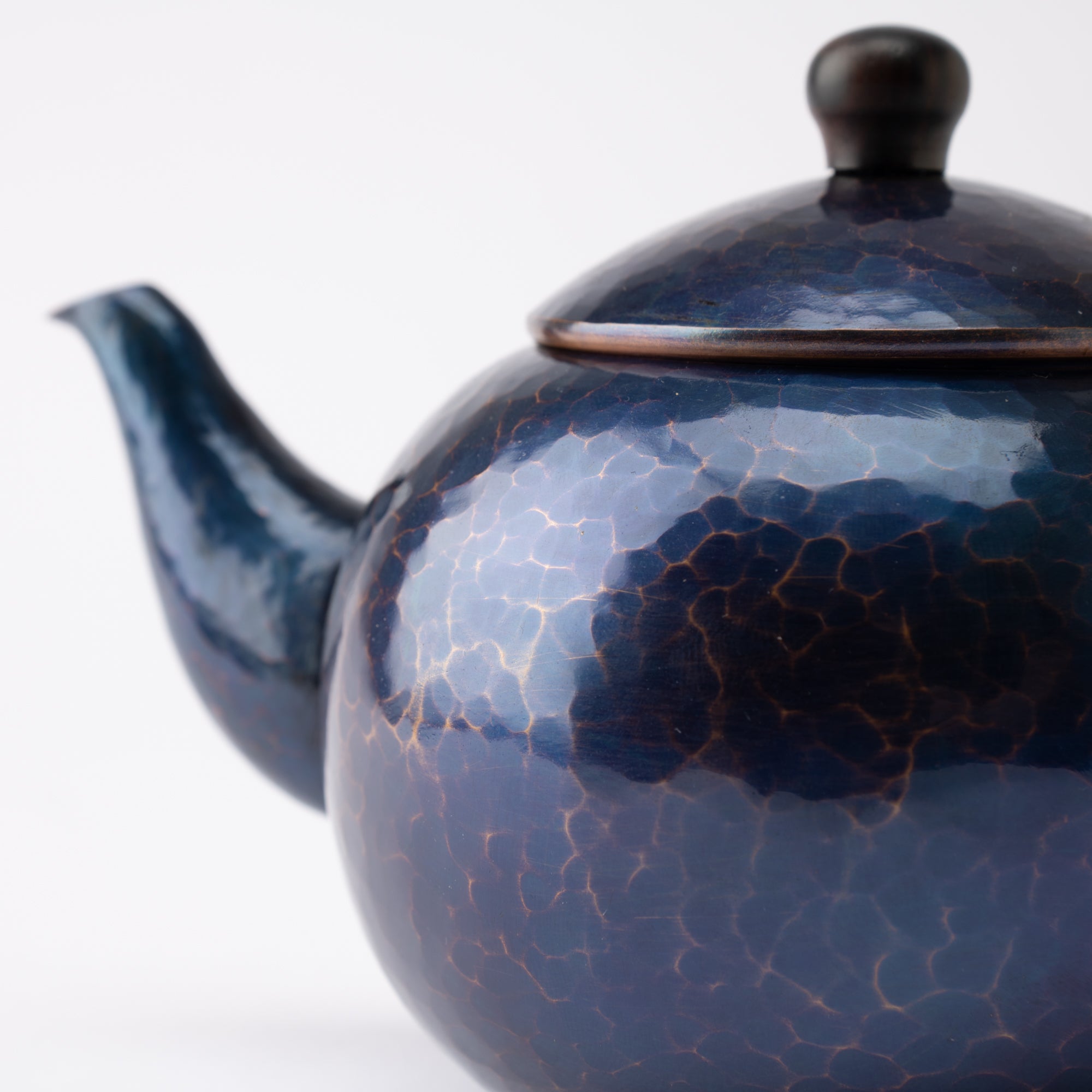
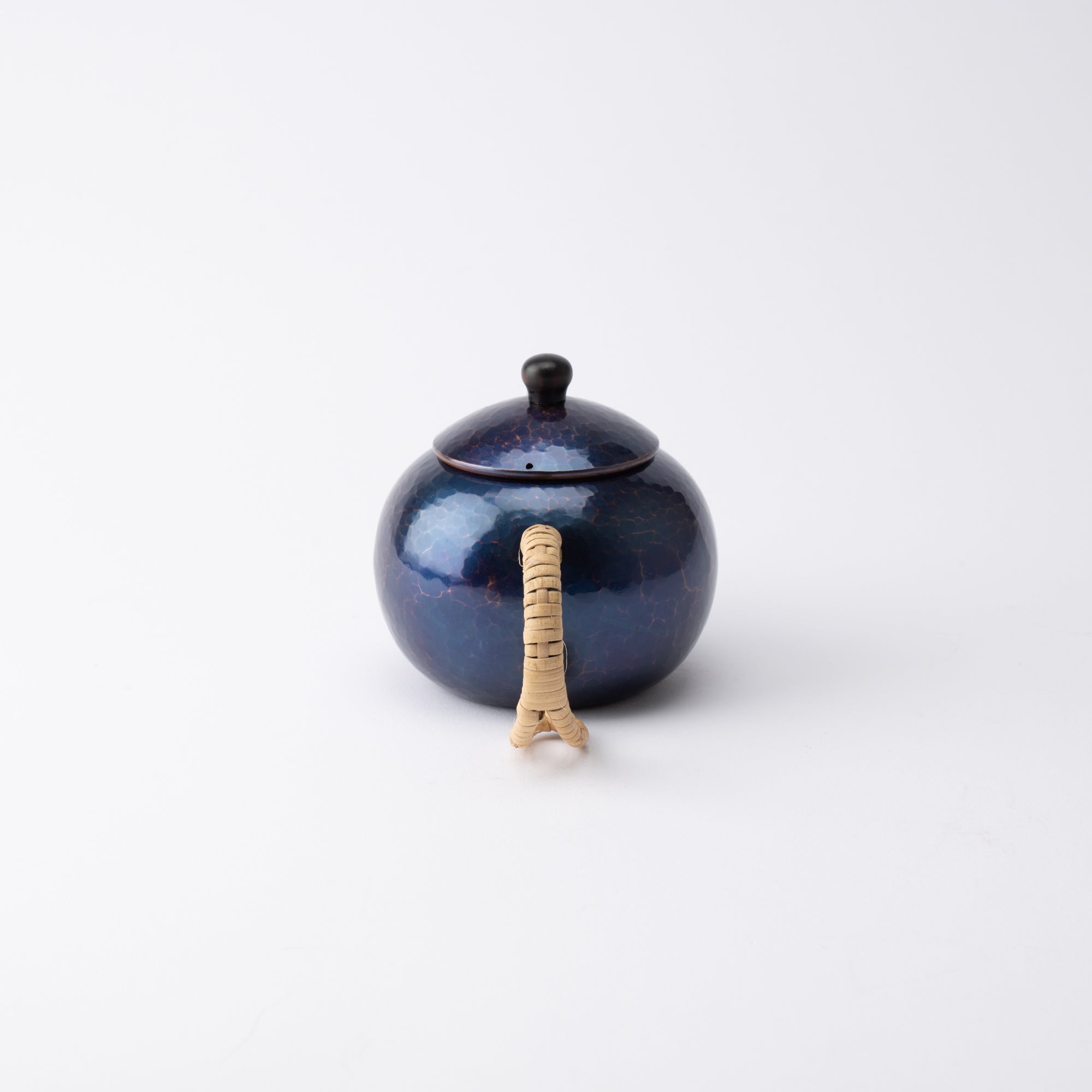
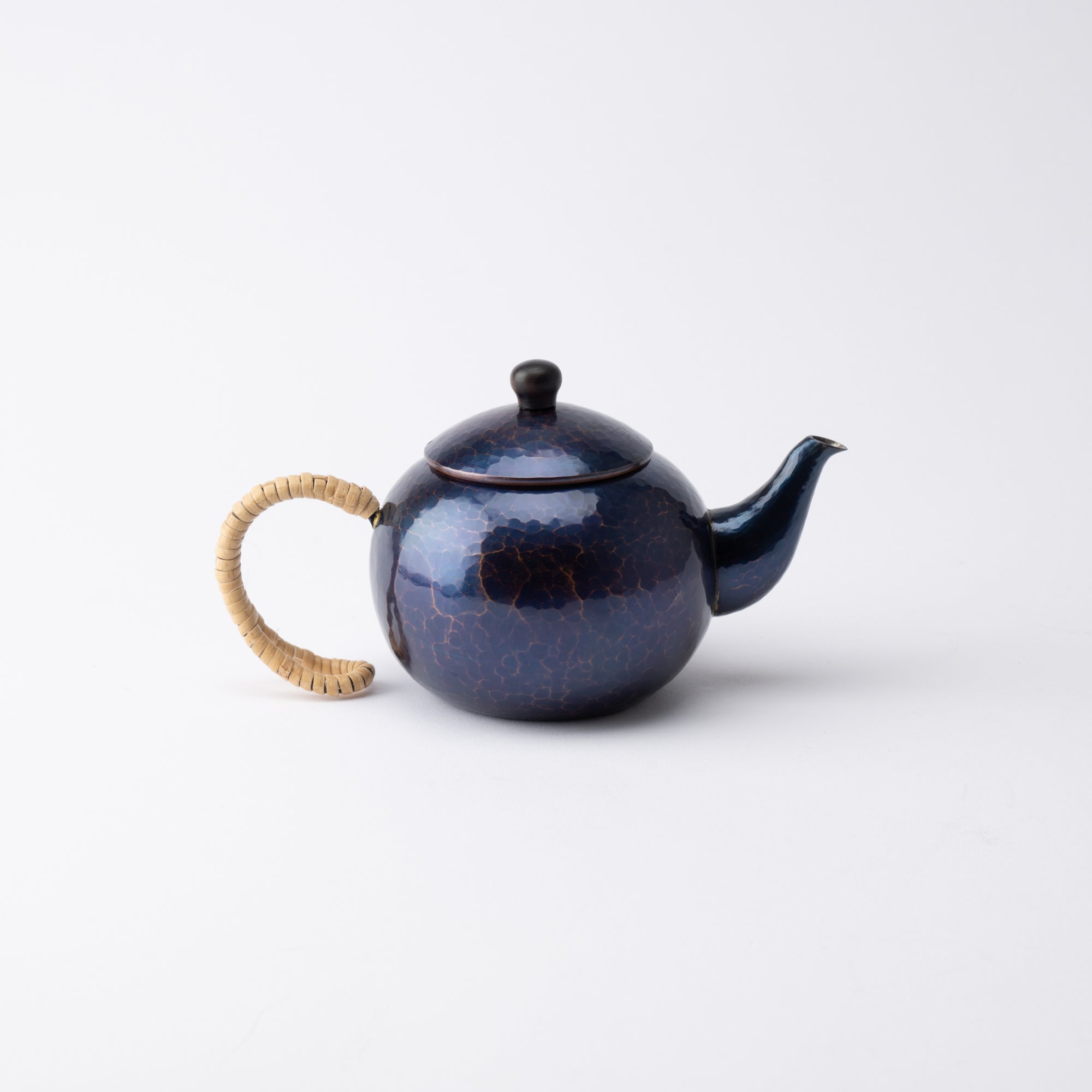
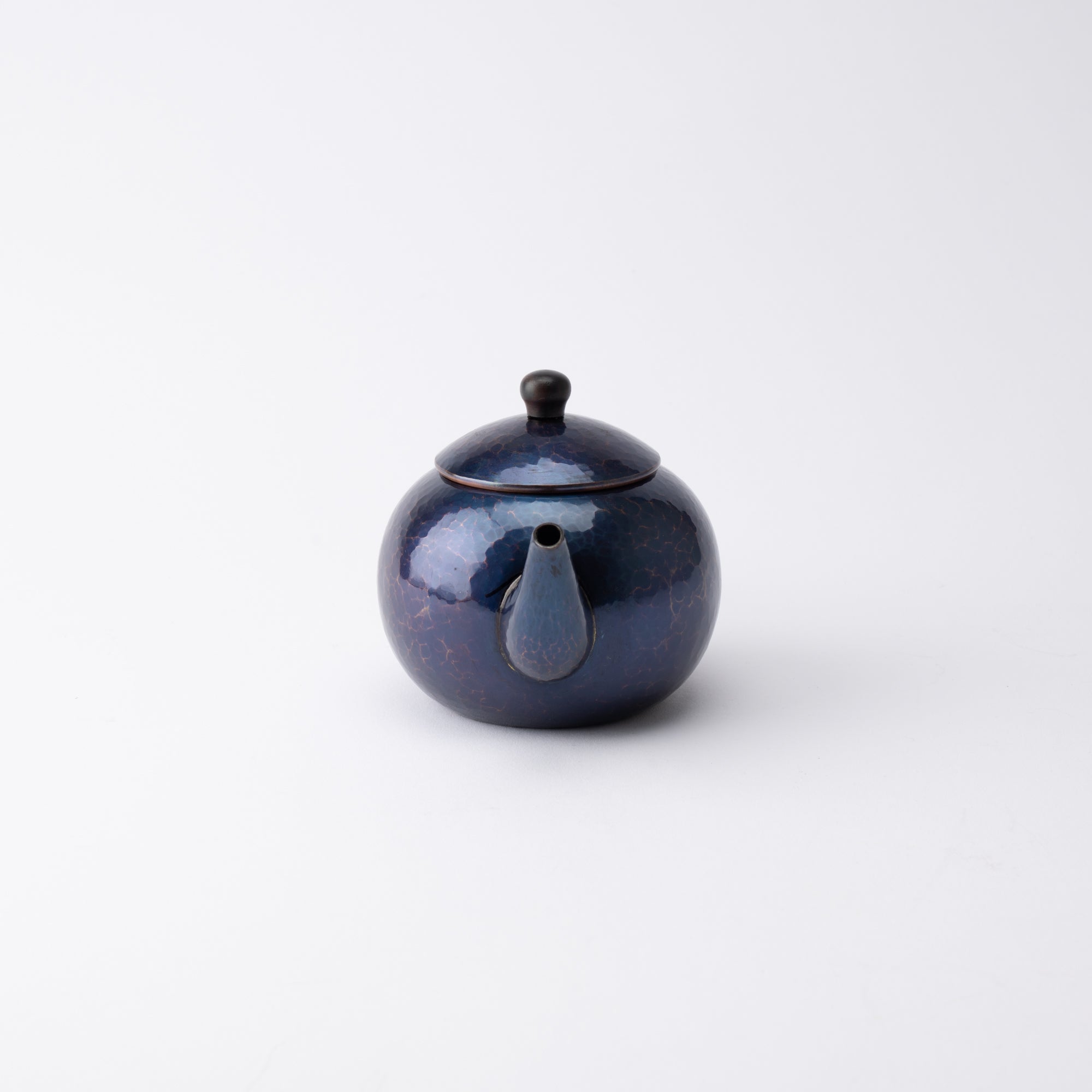


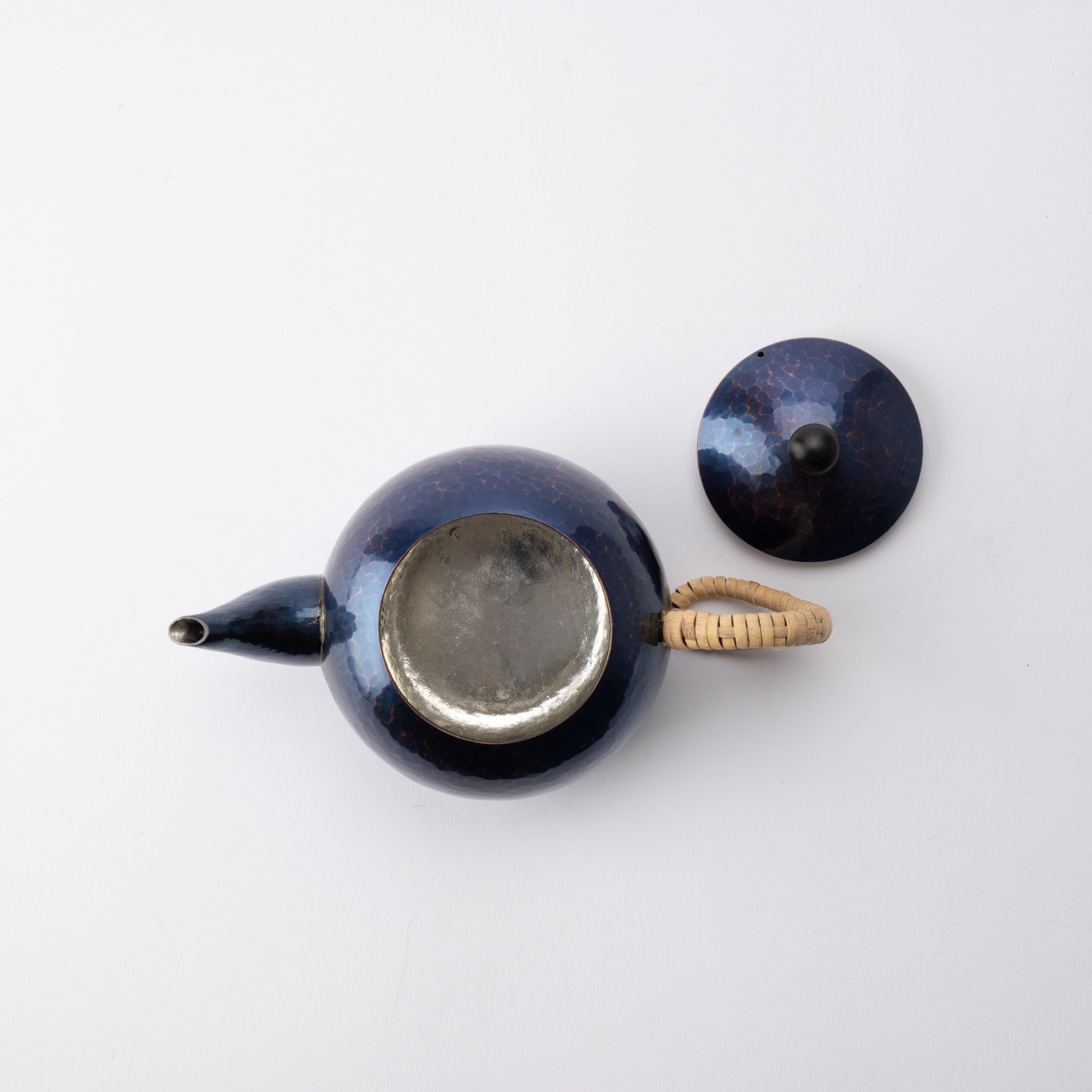
Indigo Blue Japanese Teapot
Estimated Shipping Widget will be displayed here!
This Japanese teapot has graceful curves and a deep blue color. This is a product of Seigado, a metalwork studio in Niigata Prefecture.
After melting copper into a sheet form, it is hammered into shape using the hammering technique called tsuiki, making the piece seamless.
The spout and handle are silver-waxed for durability. The lid knob is covered with sandalwood. The handle is wrapped with wisteria vines. The inside is tin-plated so that no odor remains, making it suitable for enjoying the taste of tea itself.
DETAILS
| Quantity | 1 |
| Size |
[Excluding the handle] L 10.2 cm (4 in) x W 13.5 cm (5.3 in) x H 9.5 cm (3.7 in), [bottom] D 6 cm (2.4 in) [handle] D 4.8 cm (1.9 in) x H 6.5 cm (2.6 in) |
| Capacity | 360 ml (12.2 fl oz) |
| Weight | 325 g (11.5 oz) |
| Material | Copper, Tin |
| Microwave | No |
| Dishwasher | No |
Maker / Brand
Seigado’s workshop is located at the foot of Mt. Yahiko in Niigata Prefecture, where high-quality copper was discovered about 300 years ago. This region is where the traditional tsuiki metalworking technique finds its roots.
In Japan, there's a saying that things get better with use. Seigado's products possess a charm that inspires you to cherish and care for them over time.
Crafts
Metalwork has long been prized for its durability and gorgeous appearance. In Japan, bronze swords and harnesses were made from the Yayoi period (10th century BCE–mid-3rd century CE) based on techniques introduced from China and Korea. With the rise of Buddhism, the construction of temples, Buddhist statues, and ritual implements flourished, and metalworking techniques also advanced. Eventually, a wide variety of products such as tea ceremony utensils, Japanese swords, armor, and ornaments came to be manufactured.
Choose options


























Japanese Teapots
You will certainly be able to find a Japanese teapot that warms your heart among the diverse array of styles in different materials, such as porcelain, stoneware, and cast iron. No matter what type of tea you prefer, create an authentic Japanese tea experience with a teapot that stands out—whether it's for its unique shape, striking color or intricate design.
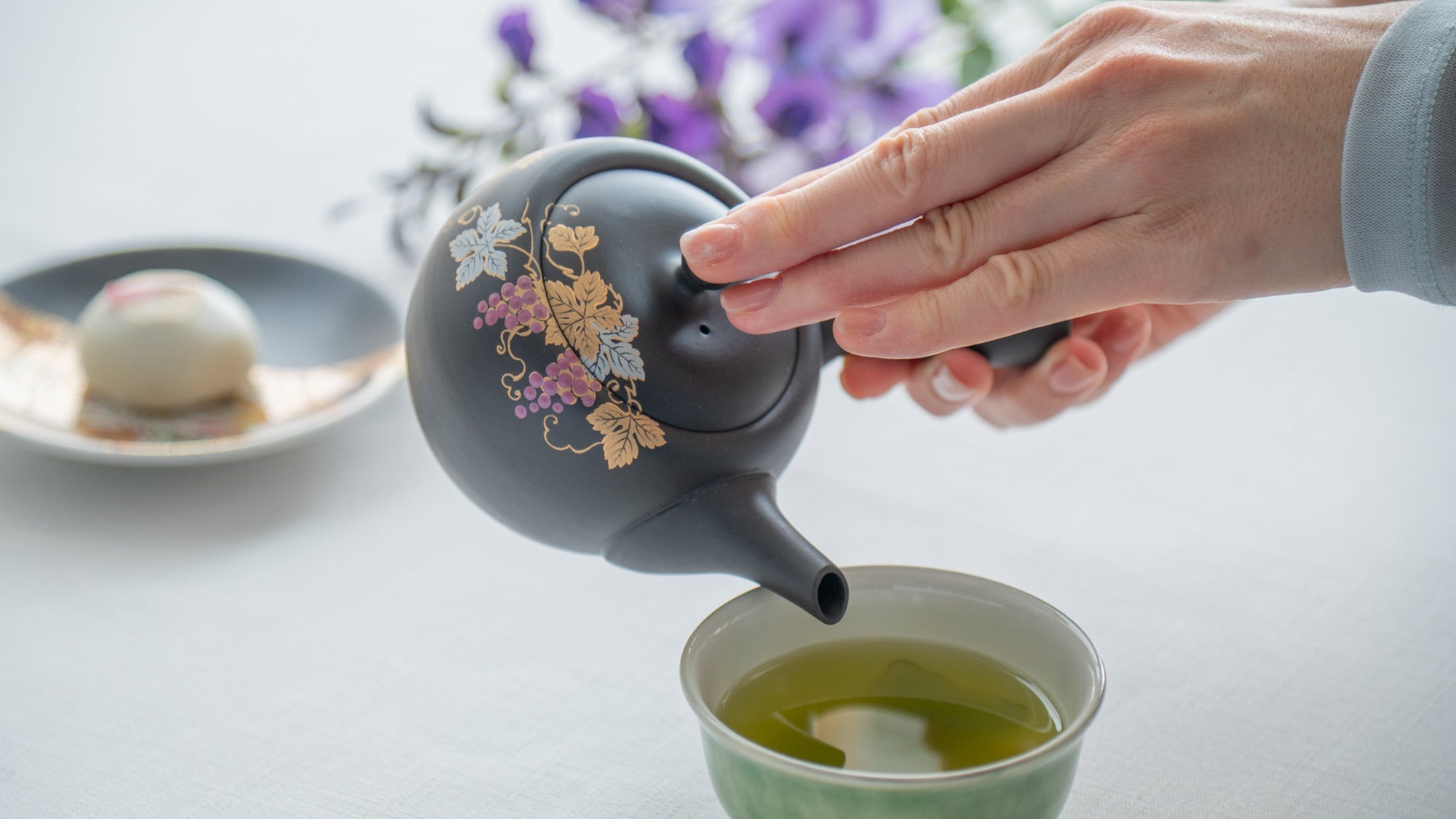
Seigado—The Radiant Beauty of Copper
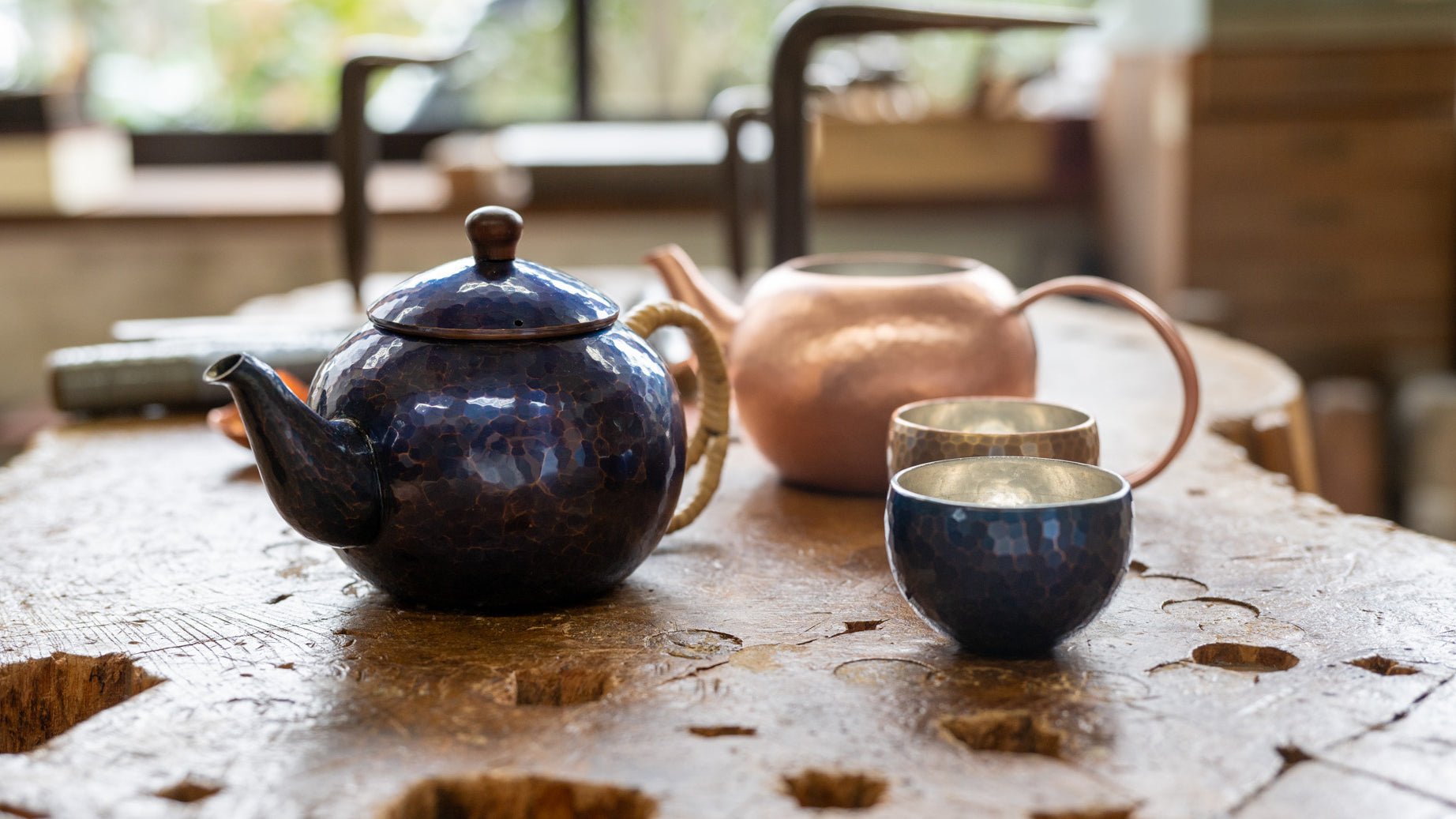
Dessert Time with Japanese Sweets
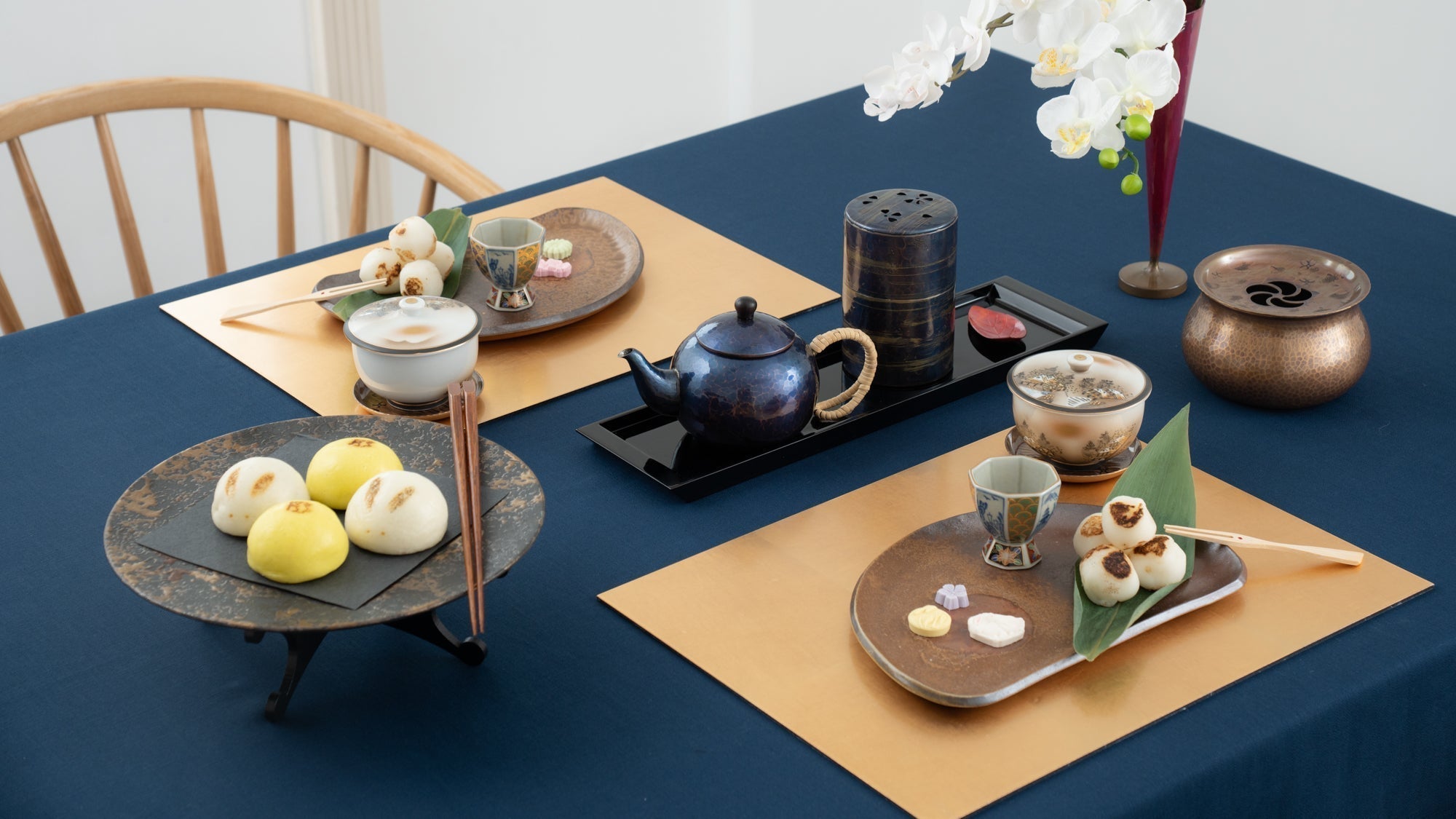
Guide to Japanese Teapots
